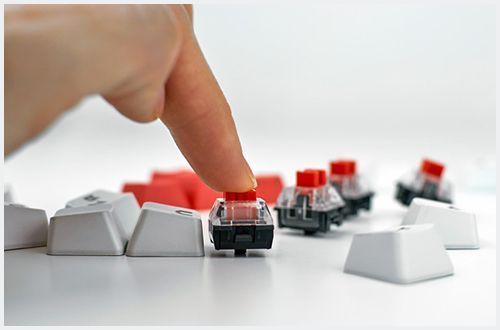Membrane switches are utilized in many products, including Electric fan remote controllers, air conditioners, microwave oven, and human-machine interfaces (HMI). Its primary function is to connect the flow of electricity circuit, like all switches. Electricity may flow between two components when the button is pressed down.On the contrary, release the button,disconnect the circuit. However, mechanical switches can also carry out this fundamental task , that is To close and disclose the electricity circuit simply. Since they have different mechanical structure, they will be used for different fields.
Material of Made and Mechanical Structure
Most of mechanical switches are copper and plastic material, though using spring and reasonable mechanical structure, to realize components locked when up and low connection points touch closely, then close the electricity circuit. But these mechanical switch has its own disavantage, their mechanical component is so loss after the switches serve for a long time. Also the maitainment is a trouble thing.
Contrarily, membrane switch is lamination structure, they typically have an electrical circuit printed with conductive ink on a sheet of polyethylene terephthalate (PET) or indium tin oxide (ITO). A membrane switch must be printed using conductive ink. It won’t be able to regulate the flow of electricity otherwise. Use of a non-conductive ink will prevent electricity from passing through it. Because they are all conductive, copper, silver, or graphite ink is used in most membrane switches.

Mechanical Switch
Membrane Switch

Flexiable
Only membrane switches are flexible, which is another way they are differnet from mechanical switches. In actuality, membrane switches are “a momentary switch device in which at least one contact is on, or constructed of, a flexible substrate,” according to ASTM International, a technical standards body based in Pennsylvania. This definition’s keyword is “flexible,” which means membrane switches can bend and stretch without breaking—at least to a certain extent. Because mechanical switches lack this advantage, they are inefficient for several applications.
Durability
Switches made of membranes are portable and long-lasting in addition to being flexible. Even certain membrane switch types have characteristics that make them resistant to water. For instance, a Kapton circuit is produced when copper and polyimide are used in place of printer silver. Kapton switches outperform conventional membrane and mechanical switches regarding current capacity and moisture resistance.
Maintenance & Sealing
The maintenance requirements of mechanical and membrane switches are another significant distinction. Membrane keypads are integrated into the components; thus, there are no gaps through which dust, dirt, or other debris could reach the circuitry. So, compared to cleaning a mechanical keypad, cleaning a membrane keypad is much simpler and takes much less time. A membrane keypad is much simpler to seal than an automatic switch.
Cost
It’s a myth that membrane keypads cost more than their mechanical counterparts, although this isn’t always the case. Membrane keypads are more affordable than mechanical switch alternatives, which makes them a desirable choice for clients who use their products frequently. Membrane keypads are less expensive for the end user since they are simpler to build and have fewer moving components because the keys are all incorporated together.
The purpose of flexiable membrane switches and mechanical switches is to regulate the flow of electricity. The former offers a higher level of strength and durability, is constructed from various materials, and has a flexible design.
LuphiTouch is a leading membrane switch manufacturer in China, has more than 12+ years of export experience, and not only provides kinds of membrane keypads but can provide you with human-machine interface solutions. Contact us today, and get your answer about it.
